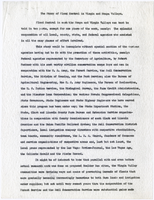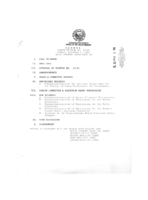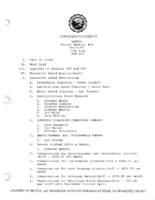Search the Special Collections and Archives Portal
Search Results
Maria Burston Wheeler Papers
Identifier
Abstract
The Maria Burston Wheeler Papers date from approximately the 1850s to 1933 and record Maria Walker's childhood and voyage from Liverpool, England to Salt Lake City, Utah in the United States through her manuscript "My History." The manuscript details her and her family's trans-Atlantic journey as well as her own journey as a married woman, Maria Burston Wheeler, to Las Vegas, Nevada to establish the Mormon Fort located there. Her manuscript details daily life at the fort.
Archival Collection
George Kelly Ryan Papers
Identifier
Abstract
The George Kelly Ryan papers (1921-1971) contain correspondence inquiring about Octavius Decatur "O. D." Gass, newspaper clippings from 1929, handwritten recollections of the Gold Ranch by Laura Royce, and a San Pedro, Los Angeles and Salt Lake Railroad Company information, including information on wash-outs in Nevada.
Archival Collection

Cecia Alvarado oral history interview: transcript
Date
Archival Collection
Description
Oral history interview with Cecia Alvarado conducted by Barbara Tabach on September 15, 2020 for the Latinx Voices of Southern Nevada Oral History Project. Cecia describes her personal history, moving to the United States as a teen in the year 2000. She talks of immigration, education, and her work as the State Director of "Mi Familia Vota."
Text

Report about flood control in Virgin and Moapa Valleys
Date
Archival Collection
Description
Narrative that describes nineteen elements of the flood control program in the Virgin and Moapa Valleys.
Text

Transcript of interview with Rosina Goodwin by Bruce Eubank, March 15, 1978
Date
Archival Collection
Description
On March 15, 1978, Bruce Eubank interviewed Rosina Goodwin (born 1918 in Sweet Springs, Missouri) about her life in Las Vegas, Nevada. Goodwin first talks about her family background before discussing the Las Vegas Strip, the Stewart Ranch, and Twin Lakes. She also talks about schools, Boulder Dam, the atomic testing, and her work as a telephone operator. The latter part of the interview includes discussion on changes in Las Vegas, the Helldorado Parade, and changes in weather.
Text

Meeting minutes for Consolidated Student Senate University of Nevada, Las Vegas, November 9, 1992
Date
Archival Collection
Description
Text

Meeting minutes for Consolidated Student Senate, University of Nevada, Las Vegas, June 14, 1983
Date
Archival Collection
Description
Text

University of Nevada, Las Vegas (UNLV) 6th commencement program
Date
Archival Collection
Description
Commencement program from University of Nevada, Las Vegas Commencement Programs and Graduation Lists (UA-00115).
Text


